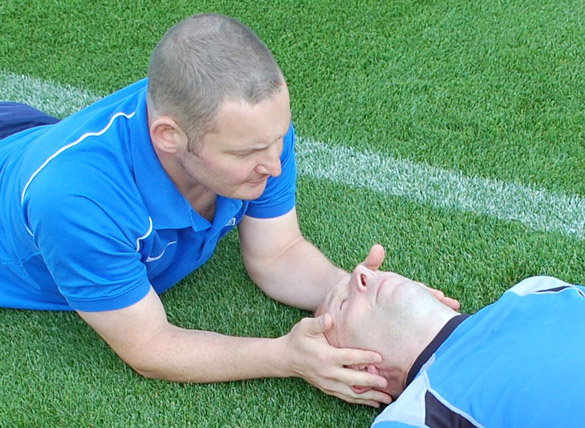Manual in-line stabilisation (MILS)
It is impossible to tell whether the spinal cord is permanently damaged or just temporarily squashed due to injuries to bones in the neck. Therefore, it is important to move the head and neck as little as possible to avoid making an injury worse. We do this through avoiding all unnecessary movement and protecting the head and neck through MILS.
MILS is the mnemonic recognised approach for protecting the head and neck in spinal trauma. In addition to providing some feedback to the player to discourage them from trying to move their head, it also acts as a red flag to others to be careful near the neck and provides a degree of protection from accidental contact from bystanders, etc.
Purpose of MILS
- Discourage the spinally injured player from moving the head.
- Protect the head and neck from accidental contact during a busy rescue.
- “Red flag” to others that there is a problem with the neck.
Once MILS has been applied, it should not be removed, until the cervical spine is cleared or spinal protection is in place.
However, if you are the only or most experienced rescuer present and a more pressing issue such as airway or major bleeding occurs, it is acceptable to place a less skilled person maintaining MILS or even temporarily release it altogether.
Skill

Manual in-line stabilisation (MILS)
Manual in-line stabilisation (MILS)
- Kneel or lie behind the head.
- Place one hand on each side of the head.
- Try not to cover the ears.
- Continue with SABCDE assessment.
- Instruct the player not to move their head.